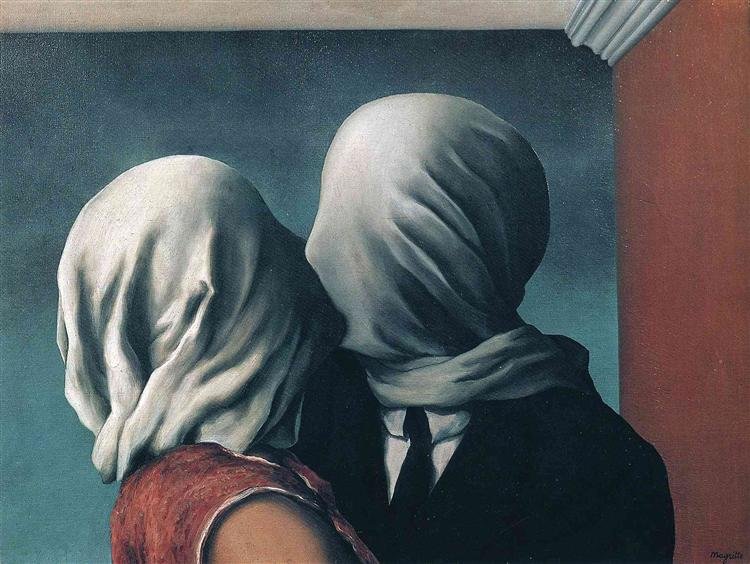Jean-Paul Sartre said that “we are condemned to be free”, and that’s not just a call to embrace freedom — it’s a warning. We’re always free to choose, but a lot of us act like we’re not. He calls this ‘Bad Faith’ (Mauvaise foi in French), which is when we’re not being honest with ourselves and denying that we have the power to make our own choices.
For Sartre (1943), it was a deliberate choice not to accept that we have freedom and that we are nothing. It is an act of evasion, a deliberate turning away from the responsibility of choice. To exist in bad faith is to deceive yourself. This is not through ignorance, but through actively distorting reality and choosing to avoid the weight of your own freedom.
Bad faith is a form of lying to oneself. We have the “inevitability” of free choice and any attempt to avoid it is “bad faith”. The manifestation of “bad faith” is in a stereotypical lifestyle or when a person decides to change his life, but he does not. To live in “bad faith” is to exist as an object.
To be in bad faith is to live as though one were utterly helpless or entirely free, unwilling to transcend the limiting factors of life, or to see them as an obstacle to action. In bad faith a person may pretend to be something rather than nothing, or on the contrary may deny their responsibilities for their actions or choices. For example, in bad faith, we may construe ourselves as we perceive that others construe us. For Sartre, this is to give predominance to the Other in the coupling of self and Other, and identifying too closely with our being-for-others.
However, in the excerpt from Gary Cox’s book (2006) on Bad Faith, the author indicates that “bad faith often looks like self-deception even though it is not”.
He also suggests that a good way to examine the different types of bad faith is to distinguish it from self-deception. Bad faith is when someone is not being honest with themselves.
Basically, for Sartre, there are two sides of the human condition:
That is our facticity and our transcendence (or freedom). Bad faith involves misrepresenting facticity as transcendence and transcendence as facticity. Our facticity is represented in Sartre’s example with the waiter, who sacrificed his entire authentic self in order to serve customers. Speaking in a particular manner and moving in a way that objectively turned him into what, essentially, is a waiter. There is a moment of realization in which the waiter realizes that being a waiter is not an ideal career choice, but he must persevere because it is his only choice in life. This type of existence is the exact opposite of what Sartre considered human beings. Sartre believed that essence arises as a result of existence.
And the young lady on a date engages in self-deception, being either the desired object, or a dreamer, unable and unwilling to solve the situation definitely — “passing from factuality to transcendence” — all this leads to the conclusion that “I am not what I am.”
So, just as we can deny our connection to something greater, we can also deny the reality and facticity of the world around us.
As Lewis Gordon (1995) formulates: “Bad faith is a pretence that we are not as free as we are, or that we are freer than we actually are.”
To clarify these themes, we first must distinguish between deception and self-deception, and we find that according to Sartre, “The essence of the lie implies in fact that the liar is in complete possession of the truth which he is hiding”. Essentially, deception is a straightforward lie. Allegedly, self-deception, has the structure of a lie and first of all, this refers to the ability of consciousness to hide from itself the intention of its own deception. The project of self-deception, on the contrary, presupposes the unity of one consciousness; deceived and deceiver must be the same person. This is can be a source of the famous paradox of a liar (If the liar is indeed lying, then the liar is telling the truth, which means the liar just lied) (Tarski, 2021).
Self-deception cannot be reduced to the concept of lying to oneself in the sense of a clear idea of the action being performed.
It is interesting how Sartre opposes Freud’s theory of repression, which doesn’t does not explain the nature of self-deception phenomenon. A person can be both conscious and yet not conscious of a particular thought. According to Sartre it seems that self-deception “lives” not somewhere in the deep “cellars” of the unconscious but rather in the “attic” of consciousness.

Sartre’s account of bad faith offers the only account of so-called self-deception that does not appeal to the problematic notion of duality within consciousness, and bad faith is, or is achieved through, attempted selective inversions of facticity and transcendence. Bad faith is not a state.
Bad faith seeks to affirm the identity of both concepts. There is no difference between a deceiver and deceit. Ultimates Bad faith never really works. It’s a risk for consciousness and a permanent risk to flee our facticity.
The author provides an example where the term ‘deception’ suggests a liar, but consider how a magician deceives us. The hand is quicker than the eye because the magician employs techniques to distract us.
A person in bad faith avoids responsibility for his embodied situation by denying that it is his situation.
In Sartre’s famous example with a waiter, we find that he aims to be a waiter in the same way that a table is a table, and it is important to him that his performance convinces others. Because the more others are convinced that he is nothing more than a waiter, the more he himself will be convinced because it is from their point of view, and their point of view alone, that he strives to see himself.
Self-deception is a special form of deception in general. Self-deception in the understanding of Sartre, is, in a certain sense, a conscious project.
It is faith in the sense in which consciousness seeks to establish the agreement between its being (as being-in-itself)
Bad faith often speaks about living inauthentically, as a denial of our freedom to respond to what we meet and by that of our responsibility. It is interesting that bad faith can also serve as a protection of our well-being, as rail-guard against anxiety. It can sustain a debilitating phobia. It can be a coping tool as well. Bad faith can be, and most often is, an escape from reality, however, it also has special wisdom, a protection mechanism like used by Scarlett O’Hara declares in Margaret Mitchell’s Gone with the Wind, “I can’t think about that right now. If I do, I’ll go crazy. I’ll think about that tomorrow.”
References:
Cox, G. (2006). Sartre: A Guide for the Perplexed. In Continuum eBooks. https://doi.org/10.5040/9781472547484
Freud, S. (1953). The standard edition of the complete psychological works of Sigmund Freud. http://psycnet.apa.org/record/1964-35016-000
Gordon, L. R. (1995). Bad faith and antiblack racism. Choice Reviews Online, 33(01), 33–0228. https://doi.org/10.5860/choice.33-0228
Sartre, J. P. (1943). Being and nothingness. https://dx.doi.org/10.4324/9780203827123
Tarski, A. (2021). The semantic conception of truth and the foundations of semantics. In The MIT Press eBooks. https://doi.org/10.7551/mitpress/12112.003.0026
Originally published on Medium


